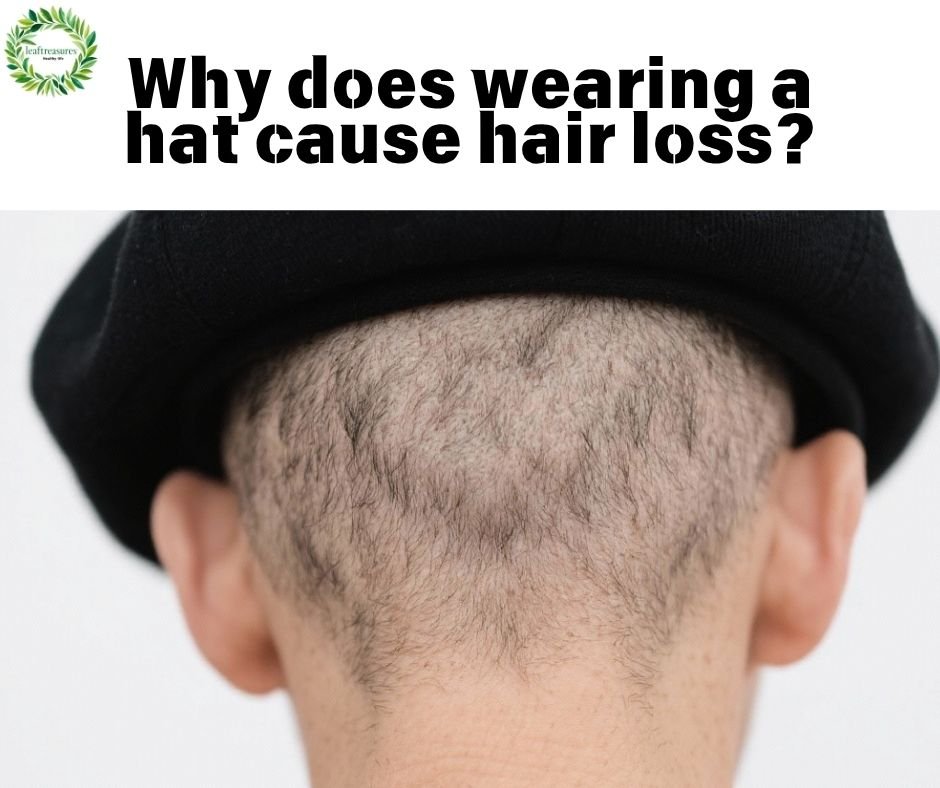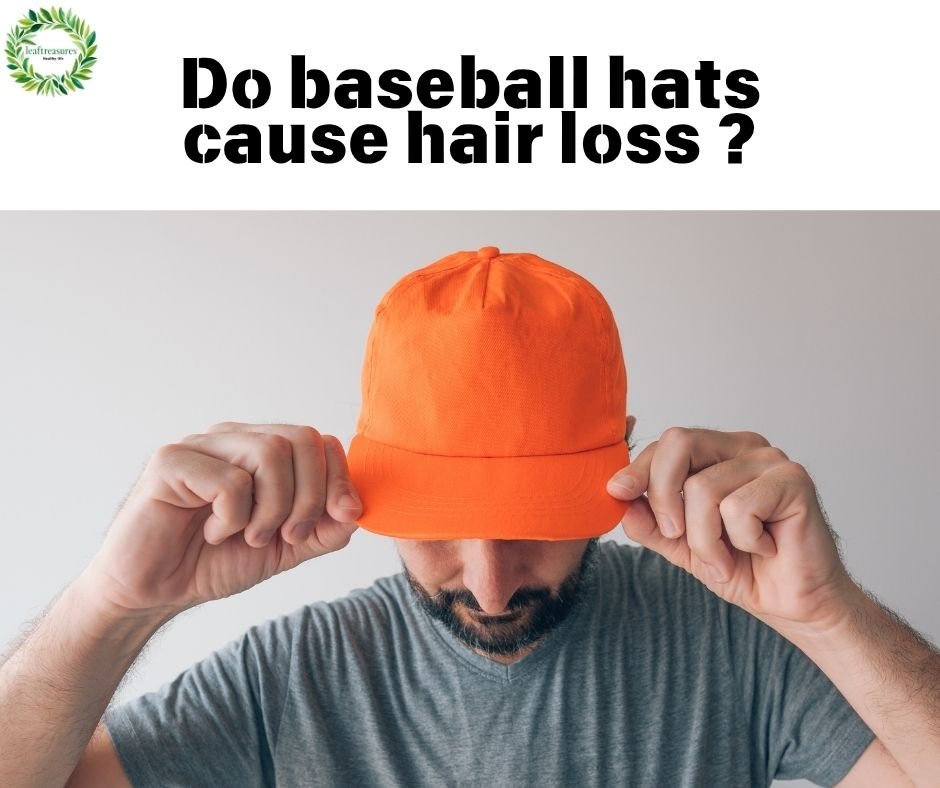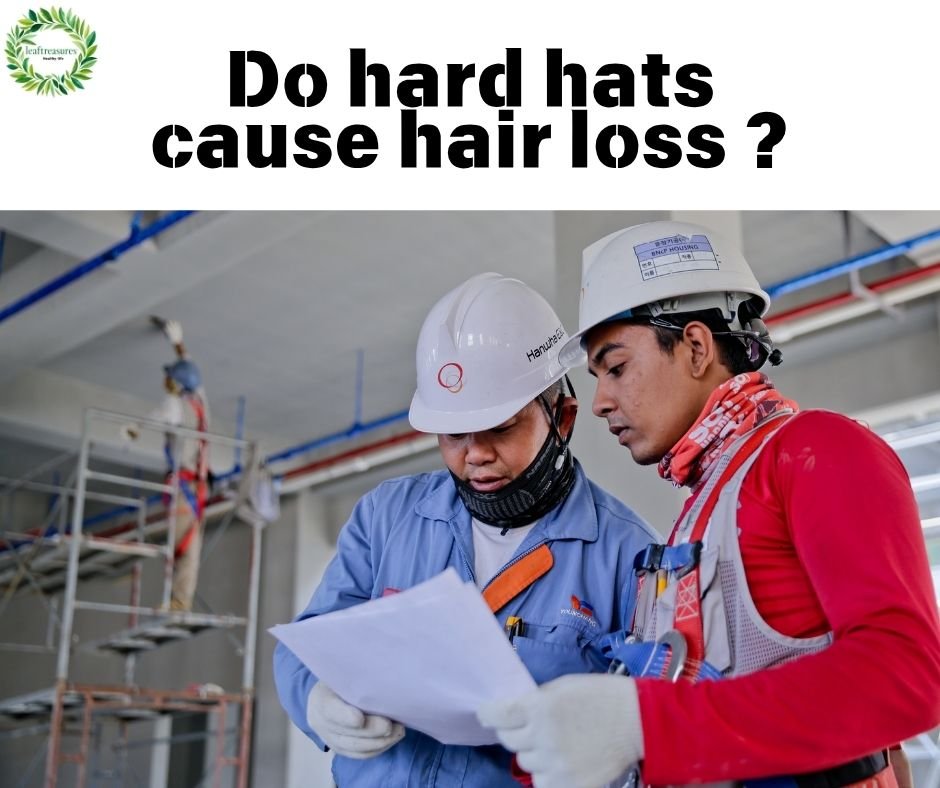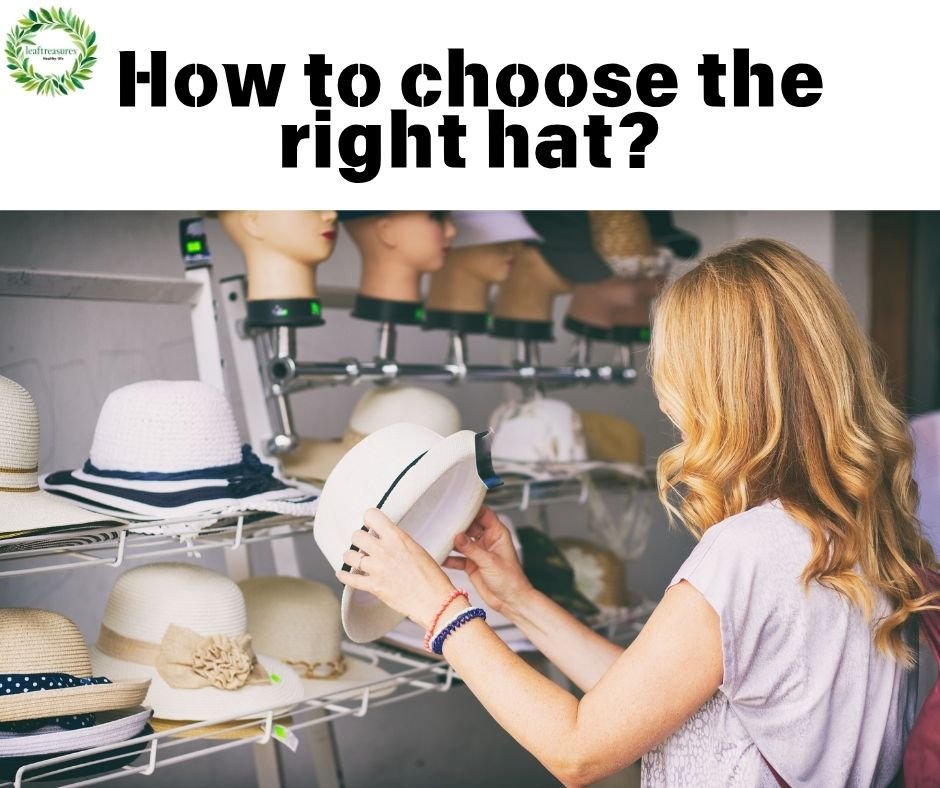Don't miss our holiday offer - up to 50% OFF!
Do Hats Cause Hair Loss? In-Depth Analysis and the Truth Revealed
Do Hats Cause Hair Loss?
Hats are a common and practical accessory in both fashion and everyday life. People wear them to stay warm in cold weather, block the sun in hot weather, or simply add a unique touch to their outfit. However, while enjoying the convenience and fashion sense that hats bring, a question has arisen that has sparked much discussion: Do hats cause hair loss?
Questions like “Do baseball caps cause hair loss?”, “Does wearing a tight hat cause hair loss?”, and “Does wearing a hat on a newborn cause hair loss?” are constantly popping up online. These questions reflect the public’s concern about hair health and the potential negative effects of hats. Below, we’ll delve deeper into the real link between hats and hair loss.

Why Does Wearing a Hat Cause Hair Loss?
Misconceptions that go against science
There’s a persistent myth that hats cause hair loss. For example, some believe that wearing a hat for a long time prevents the scalp from breathing properly, affecting the health of hair follicles. This view likely stems from a simplistic understanding of the scalp’s physiological function, assuming that the scalp, like other parts of the body, needs to freely exchange gases with the outside world. Hats, however, hinder this process, preventing hair follicles from receiving adequate oxygen, ultimately leading to hair loss.
Some people also think that hats put pressure on the head, and this continuous pressure can damage hair follicles, making it difficult for hair to grow steadily and gradually fall out. This idea may come from the general understanding that pressure affects body tissues, and the pressure of the head under the hat is analogous to the damage that may occur when other parts of the body are compressed by external forces.
The spread of online rumors
With the widespread use of the internet, rumors that hats cause hair loss have spread rapidly online. Unsubstantiated posts claiming that wearing hats can lead to severe hair loss are common on social media platforms and online forums. These rumors often lack scientific evidence, but their sensational content attracts significant attention.
Some rumors may be the result of exaggerated descriptions of individual cases. For example, someone experiencing hair loss after wearing a hat for a while may simply be linked, without considering other factors that may affect hair health, such as genetics, endocrine disorders, and excessive stress. Such overly generalized claims continue to spread online, further exacerbating public panic about hat-related hair loss.
Why Wearing a Hat Causes Hair Loss?
Currently, there’s no definitive, unified definition of whether hats cause hair loss. This is primarily due to a lack of in-depth scientific explanation and conclusive evidence clarifying the link between hats and hair loss, making it difficult for the public to accurately and precisely understand the phenomenon.
As a website focused on health research, we will attempt to apply scientific methods to elucidate the question of whether hats cause hair loss, drawing on subsequent insights and relevant research.
The effect of wearing a hat on scalp breathability
From a scientific perspective, the scalp’s ventilation isn’t as poor as some rumors suggest when wearing a hat properly. Generally speaking, a hat made of ordinary materials and with a comfortable fit won’t completely block air exchange between the scalp and the outside world. The scalp itself has a certain regulatory function, allowing for a certain degree of air exchange through its pores even when wearing a hat.
For example, hats made of breathable materials like cotton and linen allow air to circulate, preventing them from forming an airtight barrier on the scalp. Studies have shown that under normal circumstances, when wearing such hats, the scalp’s oxygen supply is sufficient to meet the normal needs of hair follicles, preventing hypoxia from impairing follicle function and leading to hair loss.
In other words, the impact of wearing a hat on scalp air permeability disproves the claim that “hats cause hair loss.”
The impact of wearing a hat on head pressure
When a hat is worn properly, the pressure on the head is generally within a safe range. A properly designed hat takes the anatomy of the human head into account, ensuring that its weight and tightness do not place excessive pressure on the head or hair follicles. Hair follicles grow deep within the scalp tissue and possess a certain degree of elasticity and resistance to pressure.
Related research has found through experimental measurements that when a hat is worn normally, the pressure on the head is far below the threshold that would damage hair follicles. Regarding pressure, the claim that hats cause hair loss is unfounded.
Therefore, under normal circumstances, wearing a hat normally will not affect the normal growth of hair due to pressure issues.It’s important to choose a hat that fits properly and fits comfortably. After all, it’s important to note that any type of headwear can cause external pressure headaches【1】.
The impact of wearing a hat on hair hygiene
Keeping your hat clean is crucial for hair health. If you don’t wash your hat regularly, factors like excessive sweating can make it a breeding ground for bacteria, fungi, and other microorganisms 【2】. These microorganisms can cause scalp inflammation, such as seborrheic dermatitis.
Scalp inflammation can worsen the scalp environment, affect the normal function of hair follicles, and indirectly lead to hair loss. To avoid this, it is recommended to wash your hat regularly and choose a hat made of breathable material to avoid sweating and damaging scalp hygiene.
The cleaning methods for hats made of different materials are also different. For example, cotton hats can be machine washed or hand washed with ordinary laundry detergent; wool hats require a special wool detergent and a gentle hand wash to avoid damaging the fibers. This also shows that under normal circumstances, the hygiene of the scalp is the key factor in whether or not you lose hair. We cannot simply say that “hats cause hair loss.” After all, from a hygiene perspective, if you don’t pay attention to the health of your scalp, wearing a hat is not a decisive factor.

Can wearing a hat incorrectly cause hair loss ?
Side effects of a hat that’s too tight
A hat that’s too tight can have a number of negative effects on your head and hair. It can compress blood vessels in your scalp, leading to poor circulation. Hair follicles, like plant roots, require an adequate blood supply to receive nutrients and oxygen. When blood circulation is impaired, hair follicles lack adequate nutrients, impacting their normal growth and metabolism, To elaborate on this issue a little more precisely,Tight hats cause hair loss.
Clinical cases have shown that people who wear tight hats for a long time experience hair loss symptoms such as receding hairlines and thinning hair on the top of their heads. To avoid this, when choosing a hat, pay attention to whether it is the right size. You can measure your head circumference and choose a hat of the appropriate size to ensure that the hat does not cause obvious pressure on the head after wearing it.
Side effects of wearing a hat for a long time
Hats Cause Hair Loss? Here’s What You Need to Know,Wearing a hat for extended periods of time keeps the scalp in a relatively closed, moist environment. This environment is conducive to the growth and reproduction of bacteria and fungi, which can easily lead to scalp problems such as increased dandruff and itching. If these scalp problems are not addressed promptly, they may further affect hair health and cause hair loss.
It’s recommended to manage the time you wear a hat appropriately to give your scalp the right amount of breathing space. For example, when you’re indoors or in a comfortable temperature, you can take off your hat to allow your scalp to breathe. Also, keep your hair clean and shampoo regularly to reduce the risk of scalp problems.
I choose the right material for my hat?
The phenomenon of “hats cause hair loss” is closely related to the material of the hat.Different hat materials have different potential effects on hair. Wool hats may attract dust and dirt due to static electricity, which can irritate the scalp and cause discomfort. Furthermore, some hats made of inferior materials may contain harmful chemicals, such as formaldehyde and heavy metals, which can cause allergic reactions on the scalp, leading to redness, swelling, and itching, and in turn affecting hair growth.
To choose a hat that is more friendly to your hair, you can choose the right material according to the season and scalp type. In summer, you can choose cotton or linen hats with good breathability; in winter, if you choose a wool hat, pay attention to choosing a product with reliable quality and anti-static treatment.
Can I Wear a Hat if I’m Experiencing Hair Loss?
people with androgenic alopecia wear hats ?
Androgenetic alopecia is a very common type of hair loss, primarily linked to genetics and androgen levels. Hats are generally not a primary contributing factor in this condition.
However, wearing a tight hat can exacerbate hair loss symptoms. This is because a tight hat can compress blood vessels in the scalp, limiting blood supply to the hair follicles.
The hair follicles of those with androgenetic alopecia are naturally fragile, and this added pressure can accelerate follicle shrinkage, ultimately leading to even more severe hair loss. This is known as the “hats cause hair loss” link under certain conditions.
Can I wear a hat if I have alopecia areata ?
The causes of alopecia areata are complex, often closely linked to autoimmune factors and stress. Based on current research and understanding, there’s no direct link between hats and alopecia areata. Hats don’t directly cause alopecia areata, so the simplistic causal relationship of “hats cause hair loss” (specifically referring to alopecia areata) cannot be simply established.
However, for those with alopecia areata, poor hat-wearing habits can negatively impact scalp recovery. For example, wearing a tight hat can constrict the scalp and impair normal blood circulation. Wearing a dirty hat can irritate the scalp with bacteria and dirt, leading to inflammation. These conditions hinder hair regrowth in the alopecia areata area and disrupt the scalp’s normal repair process.
Can I wear a hat if I have telogen effluvium ?
Telogen effluvium is typically triggered by a variety of factors, including physical or psychological stress and malnutrition, which can cause hair to enter the resting phase prematurely and eventually fall out. Hats generally do not directly contribute to telogen effluvium.
However, in certain circumstances, such as prolonged scalp discomfort from wearing a tight hat, it can indirectly affect the hair growth cycle. Scalp discomfort can trigger a stress response in the body, disrupting the balance of the endocrine system and further interfering with the normal growth and shedding rhythm of hair. This specific context has led to the saying “hats cause hair loss.”
What Types of Hats Can Cause Hair Loss?
Do baseball hats cause hair loss ?
Baseball caps are widely loved for their simple and stylish design. Under normal circumstances, choosing the right size, made of breathable material, and maintaining proper wear and hygiene will generally not cause hair loss. However, if a baseball cap is too tight or worn continuously for long periods without proper cleaning, it may have adverse effects on the scalp and hair.
For example, some people wear baseball caps during exercise. Exercise causes a lot of sweating on the head. If the cap is not breathable, the sweat cannot evaporate in time, creating a humid environment on the scalp surface, which can easily breed bacteria and cause scalp problems. Therefore, when choosing a baseball cap, make sure the material has good breathability, and wash the cap and hair promptly after exercise.
Do baseball hats cause hair loss? I think we should pay more attention to whether the baseball caps we buy are breathable enough, which is the key to this issue.

Do hard hats cause hair loss ?
Hard hats play a vital role in protecting the head in industries like industry and construction. While their design focuses on head protection, proper wear and proper selection generally don’t cause hair loss. Hard hats typically feature a space and ventilation design, protecting the head while minimizing pressure and impact on the scalp.
However, if a hard hat is not the right size, either too tight or too loose, it can cause problems. A too tight hard hat can compress the scalp and affect blood circulation; a too loose hard hat can cause it to shake during exercise or work, rubbing against the scalp and damaging the hair. Therefore, before using a hard hat, be sure to adjust it to the correct size to ensure it fits comfortably and securely.

Do beanie hats cause hair loss?
Beanies come in a variety of styles, suitable for different occasions. Under normal circumstances, beanies have minimal impact on hair. However, if a beanie is made of an airtight material or is too tight, it may, like other tight hats, compress blood vessels in the scalp, affecting blood supply to hair follicles and causing hair loss.
In addition, beanies come into direct contact with the scalp. If the material is not clean, it is easy to breed bacteria and cause scalp inflammation. Therefore, when choosing a beanie, pay attention to the breathability and cleanliness of the material, wash it regularly, and keep the hat clean.

Do winter hats cause hair loss ?
In winter, people often wear winter hats and wool caps to stay warm. However, there’s a balance between the warmth of winter hats and breathability. Some heavy winter hats can block airflow, leading to dampness and bacterial growth. While wool caps offer excellent warmth, they can also generate static electricity, attracting dust and dirt.
To avoid these issues, choose a winter hat with good breathability, such as one with a breathable inner layer. For wool hats, choose ones with anti-static treatment and clean your hair immediately after wearing them. Also, avoid wearing a winter hat for extended periods of time to allow your scalp time to breathe.
How to Prevent Hair Loss Caused by Wearing Hats ?
How to choose the right hat?
Accurate size selection
Choosing the right hat size is key to preventing hat-related hair loss. You can determine the right hat size for you by measuring your head circumference. Generally speaking, a hat should feel comfortable, not too tight, but not too loose that it easily falls off.
When buying a hat, refer to the store’s size chart or try it on yourself. When trying it on, pay attention to how well the hat fits on your head, especially around the forehead, ears, and back of the head. If the hat is too tight, it can cause scalp pain and poor circulation. If it’s too loose, it can rub against your scalp during activities, damaging your hair.
Choose high-quality materials
Choosing a hat material that’s breathable, soft, and comfortable is crucial for healthy hair. Materials like cotton, linen, and natural fibers are breathable, allowing the scalp to breathe freely and reducing the chance of bacterial growth. These materials are also soft and comfortable, and won’t irritate the scalp.
Avoid materials containing harmful chemicals or that are allergenic. Some low-quality synthetic fibers may release harmful gases, irritate the scalp, and cause allergic reactions. When purchasing a hat, check the product’s material description and choose a product that is reliable, environmentally friendly, and healthy.
Suitable style
Choose the right hat style for each season, occasion, and personal needs. For summer, opt for a wide-brimmed hat with good ventilation, which not only blocks the sun but also increases head ventilation. For winter, opt for a woolen or fur hat for warmth, but be sure to choose one that’s breathable.
In addition, different hairstyles also suit different hat styles. For example, if you have long hair, you can choose a beanie or a beret to show your elegance; if you have short hair, you can choose a baseball cap or a peaked cap to look more capable and neat.

How to Wear a Hat Correctly ?
Reasonably control the wearing time
Avoid wearing a hat for extended periods of time; give your scalp adequate rest. When indoors or in a comfortable temperature, take off your hat to allow your scalp to breathe. For example, when working in an office, periodically remove your hat to move your head and improve blood circulation.
Wearing a hat for a long time will keep the scalp in a humid and hot environment, which is prone to breeding bacteria and fungi, causing scalp problems. Therefore, properly arranging the time to wear a hat will help maintain a healthy scalp.
Attach great importance to cleanliness and hygiene
Regularly washing your hat is key to keeping it clean. Different hat materials require different cleaning methods. Cotton hats can be machine washed or hand washed with regular laundry detergent, but be careful not to use too high a temperature to prevent shrinkage and deformation.
Wool hats require a special wool detergent and a gentle hand wash. Dissolve the detergent in warm water, then gently soak the hat in the water, rub it gently with your hands, and finally rinse it with clean water, squeeze out any moisture, and lay it flat to dry.
Fur hats require more professional care and are best sent to a professional dry cleaner for cleaning. At the same time, pay attention to the storage environment of the hat, keep it dry and ventilated to avoid moisture and mold.
Avoid excessive pressure
When wearing a hat, be sure to adjust its position to avoid excessive pressure on any particular part of your head. You can rotate the hat frequently to evenly distribute the pressure. If the hat feels too tight or uncomfortable, adjust or replace it immediately.
How to Make Your Hair Healthier?
Good living habits
A balanced diet, adequate sleep, and moderate exercise are essential for healthy hair. A balanced diet provides essential nutrients, such as protein, vitamins, and minerals. Protein is a major component of hair, and a lack of it can lead to dry, brittle hair that easily falls out.The benefits of vitamin C to hair are beyond words.
Adequate sleep helps the body’s metabolism and hormone balance, which plays an important role in hair growth and repair. Moderate exercise can promote blood circulation, enhance the body’s immunity, and is also beneficial to hair health.
Proper hair care
Choosing the right shampoo and conditioner, avoiding excessive perming and dyeing, and combing your hair properly can enhance the health and resilience of your hair. Shampoo should be selected based on your scalp type and hair texture. For example, a refreshing shampoo is recommended for an oily scalp, while a moisturizing shampoo is recommended for a dry scalp.
Avoid excessive perming and dyeing, as the chemicals in perms and dyes can damage the hair cuticles, causing them to become dry and brittle. Properly combing your hair can reduce pulling and damage. It’s recommended to use a wide-tooth comb, gently combing from the ends and working your way up to the roots.

Scientific Treatment of Hats and Hair Loss
In summary, hats normally don’t cause hair loss. However, improper habits like wearing them too tightly, for extended periods, or neglecting proper hygiene can negatively impact hair. Different hat types, depending on their material, style, and how they’re worn, can also have varying degrees of impact on hair health.
[Leaftreasures] is committed to providing scientific and accurate health information. Regarding the issue of hats and hair loss, we recommend a scientific approach and avoid unsubstantiated rumors and misconceptions. When choosing and wearing a hat, choose the right one based on your individual needs.
If you’re experiencing hair loss, you can find hair loss treatment products in our store, tailored to your specific needs. You can also find more up-to-date health information and hair care tips on our [Blog Section].
We welcome you to share your experiences and opinions in the comments section, including whether you’ve experienced hair loss from wearing a hat and what solutions you’ve adopted. Through interactive communication, we can learn together, further understand the relationship between hats and hair loss, and better protect our hair health. Let us use scientific knowledge and rational attitude to enjoy the convenience and fashion brought by hats while having healthy and thick hair.


[…] contact with and use of heat styling tools, and hairstyles that tightly tie your hair up. Also, choose loose-fitting hats, as these can damage your hair and scalp. Use gentle, additive-free shampoos and conditioners, and […]